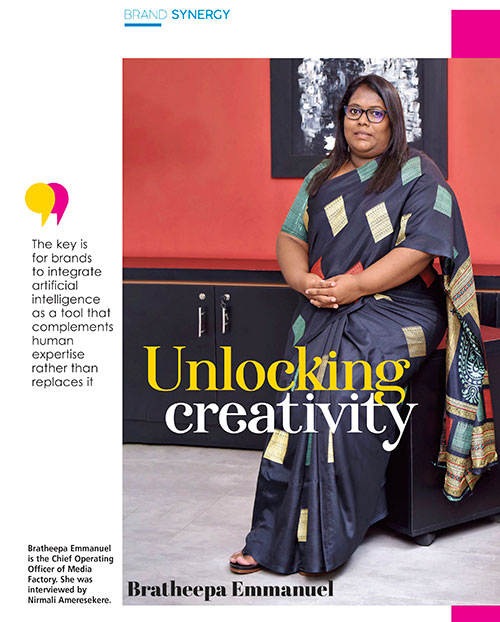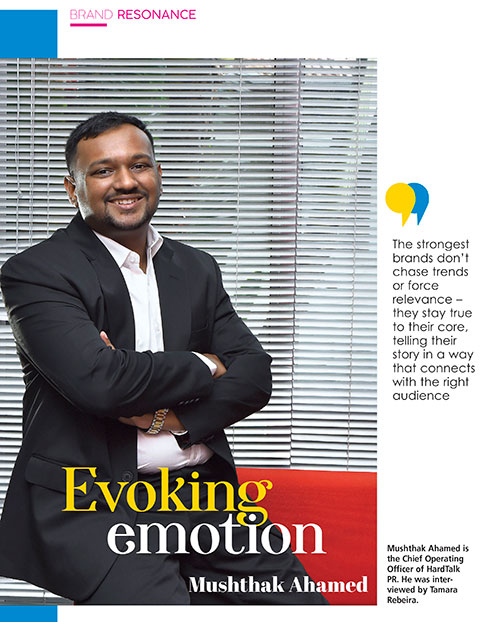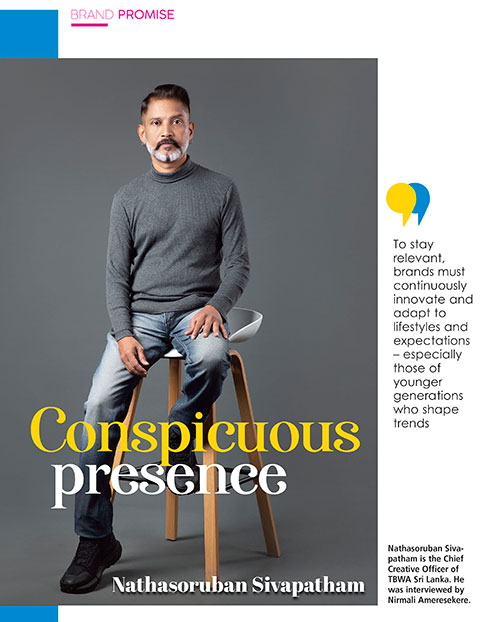BRAND LOVE
Timeless footprint
Sheron Jayasundara
Q: How would you define a strong brand – and what key elements contribute to brand building?
A: If you hear someone say ‘I love that brand,’ you know you’ve built a strong brand that has captured the hearts of your consumers.
When brands live up to their promises, trust and credibility can promptly become part and parcel of those brands, which then leads to brand love.
In building a strong brand, a deep understanding of the target audience is key; it leads to brand positioning and helps the brand stand out from its competition. Another key factor is consistency – this involves everything you do for the brand including communications, which play a major role in building strong brands.
For example, take a successful brand such as Nike; its brand communications have a consistent tone. Through its payoff line ‘Just Do It’ or the swoosh logo, Nike consistently reinforces its brand image in the minds of consumers.
Another key factor is simplicity. A strong brand should keep it simple for easy recognition as it breaks language barriers and is relatable to anyone anywhere in the world.
Q: In today’s competitive landscape, what challenges do businesses face when developing a brand identity?
A: Due to the challenging economic environment in this country, there’s immense pressure to deliver short-term financial results, which tempts organisations to focus on tactics on measurable key performing indicators (KPI). These yardsticks neglect the objective of building brands for the long term.
Cutthroat competition – from price cuts, promotions and freebies – is also prevalent, so consumers are spoilt for choice. Brands must stay agile and adapt to the challenges presented in a highly competitive environment.
By understanding consumer preferences and what makes them really tick, brands can adopt a more engaging and reassuring communications strategy to build brand loyalty and trust.
Using the power of digital, brands can be more targeted and personalised, by developing and implementing authentic and effective strategies to build strong bonds with consumers. This will enable them to differentiate and position themselves for long-term success.
Q: How important is brand purpose in today’s world? And how can businesses ensure authenticity in their branding?
A: Never have we witnessed consumers this intimately involved with the brands they embrace.
The conversation between consumers is more active now than ever before. Thanks to social media, increased awareness and engagement can come from a powerful consumer driven discourse that will inspire a unique brand purpose.
In turn, brand purpose helps define why it exists. When a brand has a purpose, it forges a deeper emotional connection with all its stakeholders and fosters a strong sense of brand loyalty among consumers.
It is important that businesses identify purpose driven initiatives, which align with the brand offering and form part of the brand’s voice, promise, actions and goals. These factors help build brand authenticity, believability and trust.
Q: What are the most effective marketing channels for building brand presence today?
A: A multi-channel approach would be ideal. Combining organic growth such as search engine optimisation (SEO), social media and PR – including paid-for channels such as advertisements, influencer marketing and out of home advertising (OOH) – ensures both short-term results and long-term brand presence.
However, the beauty is in the way marketers use this combination. Gone are the days of ‘Mad Men’ where one-size-fits-all worked. Marketers need to harness the strengths of each channel and create engaging content that suits them individually.
By using data and social listening tools, marketers can pick the best combination to engage with their different audiences.






